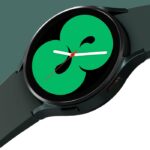Feeding honeybee colonies isn’t just about keeping them alive; it’s about giving them the right nutrition at the right time to thrive. Whether you’re a beginner or an experienced beekeeper, understanding how to adjust feeding practices throughout the year is key to maintaining strong, productive hives. Alongside proper feeding, wearing the best beekeeping suits and using essential Beekeeping Jackets ensures safety and efficiency during hive inspections and feeding routines. This guide will walk you through seasonal feeding strategies and help you make the best choices to keep your bees healthy year-round while staying protected and prepared.
Why Seasonal Feeding Matters for Honeybee Health
Honeybees rely on natural nectar and pollen for their primary nutrition. However, seasonal changes often lead to shortages in these essential resources, affecting bee colony health and nutrition. Feeding your colonies based on the time of year ensures that they have the energy needed for brood rearing, foraging, and surviving through harsh conditions. Proper seasonal feeding helps prevent starvation and reduces colony stress, leading to healthier hives and better honey production.
Spring Bee Nutrition: Kickstarting Growth
Spring is a critical time for bee colonies as they emerge from winter and begin to build up their populations. During this period, spring bee nutrition focuses on stimulating brood production and supporting foragers.
What to Feed in Spring
- Pollen Patties: Provide protein to boost brood rearing.
- Sugar Syrup (1:1 ratio): Mimics nectar and encourages wax production.
- Nectar and Pollen Substitutes: Useful in early spring when natural sources are scarce.
By offering these supplements, you ensure your bees have the energy and nutrients needed for a strong start to the season.
Summer Feeding: Relying on Natural Resources with Caution
In summer, honeybees usually have abundant access to natural nectar and pollen. However, environmental factors like drought or poor forage conditions can limit resources, making supplemental feeding for bees necessary even in this season.
When to Feed in Summer
- Monitor the availability of natural forage.
- Use sugar syrup if nectar sources dry up.
- Avoid overfeeding to prevent robbing and honey contamination.
Balancing natural foraging with occasional supplements helps maintain hive strength without disrupting their natural routines.
Fall Beekeeping Feeding Strategies: Preparing for Winter
Fall is a time to prepare your colonies for the colder months ahead. Proper fall beekeeping feeding strategies ensure that your bees have enough stored food to survive winter and enter the spring season strong.
What to Feed in Fall
- 2:1 Sugar Syrup: Encourages bees to store honey for winter.
- Pollen Patties: Ensures protein availability as natural pollen sources diminish.
- Nectar and Pollen Substitutes: Useful when flowers are scarce late in the season.
Feeding in the fall is about building up reserves, so your bees have the energy to keep the hive warm and sustain themselves through the long winter months.
Winter Sugar Feeding for Bees: Ensuring Survival
Winter is the most challenging season for honeybees, as they rely entirely on stored food to stay alive. Winter sugar feeding for bees can be the difference between a colony that thrives and one that perishes.
How to Feed in Winter
- Sugar Candy Boards: Provide a solid source of emergency food.
- Fondant or Dry Sugar: Simple and effective solutions for emergency feeding.
- Monitor Hive Weight: Regular checks help you know when supplemental feeding is needed.
Winter feeding keeps energy levels up, helping the bees generate the heat they need to survive cold temperatures.
Best Practices for Feeding Honeybee Colonies
Feeding honeybee colonies is not just about offering food but doing so wisely to avoid negative effects like overfeeding or promoting robbing behavior. Here are some seasonal beekeeping feeding tips to keep in mind:
- Feed early in the morning or late in the evening to reduce robbing risks.
- Use feeders designed to minimize spilling and bee drowning.
- Regularly inspect your hives to adjust feeding as needed.
Whether you’re using nectar and pollen substitutes or natural forage, understanding your bees’ nutritional needs throughout the year will help you maintain healthier, more productive colonies.
Conclusion:
Feeding honeybee colonies is a dynamic process that changes with the seasons. By following this seasonal feeding guide and tailoring your approach to your bees’ specific needs, you’ll ensure they remain strong, healthy, and productive year-round. From spring bee nutrition to winter sugar feeding for bees, every step you take helps build resilient hives that can withstand the challenges of the environment. Additionally, using the right beekeeping gears during hive management ensures safety and efficiency, making it easier to provide the care your colonies need throughout the year.








